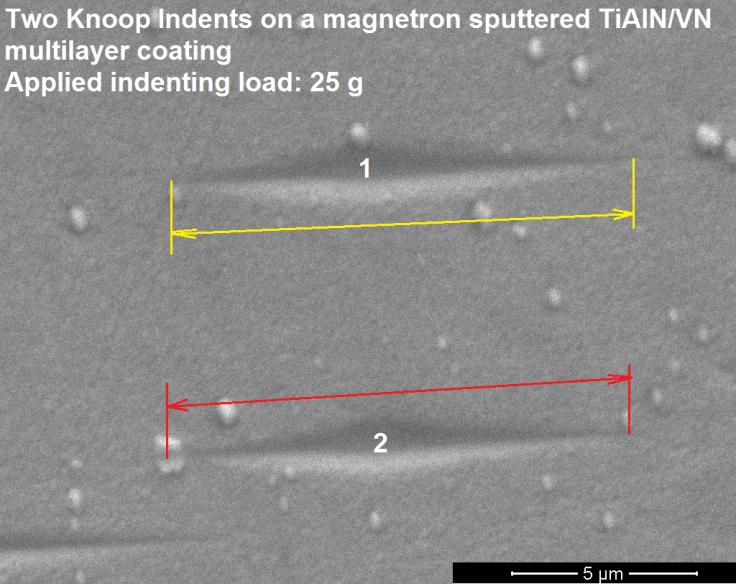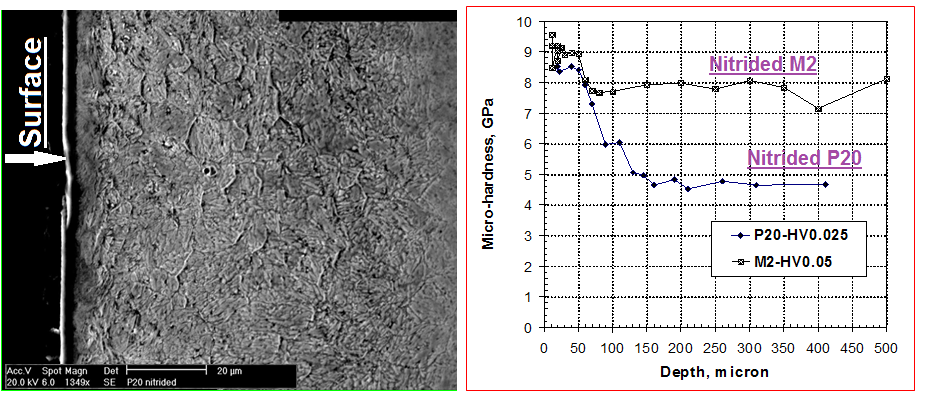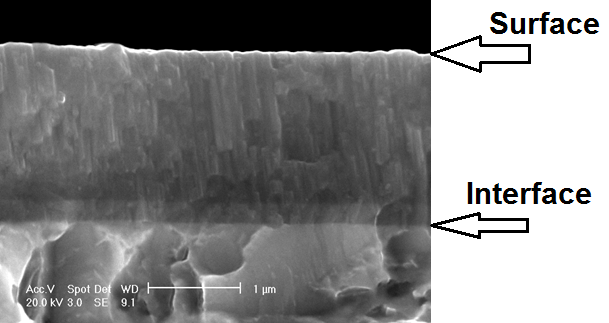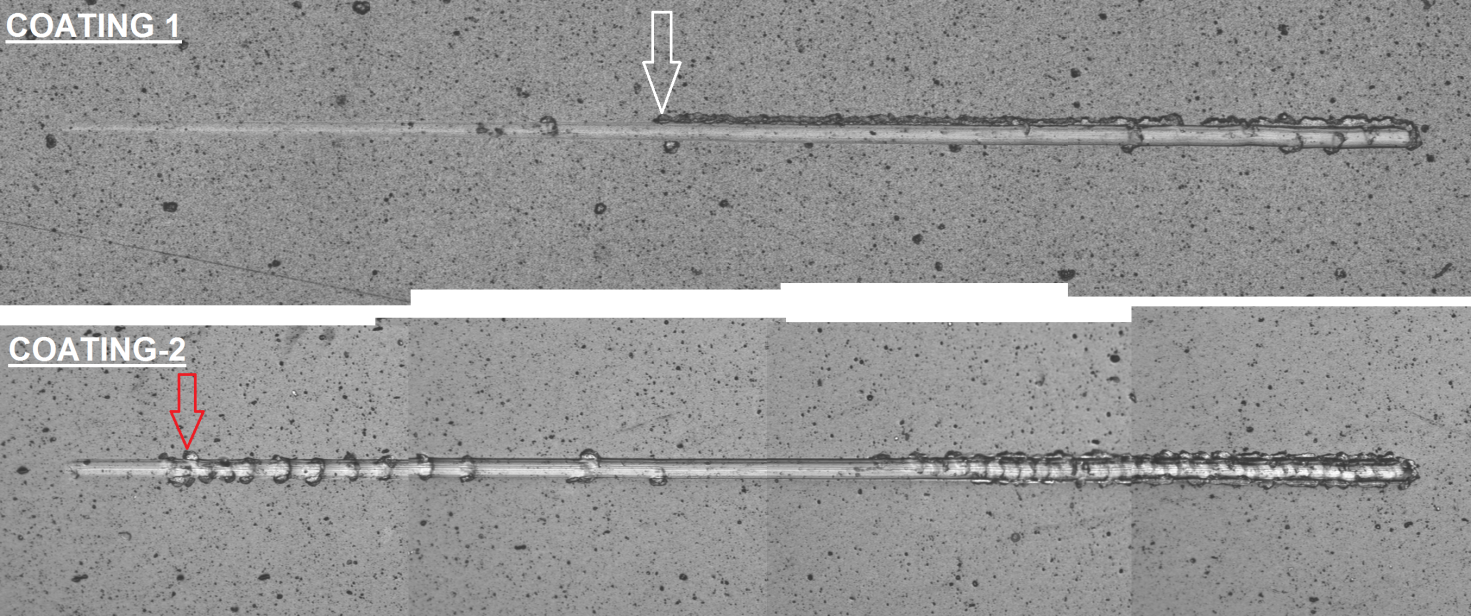Coatings analysis for hardness thickness and adhesion
Hardness is an important property for wear resistant coatings and hardfacing treated parts, also important for coatings of other purposes such as thermal barrier coatings. In many circumstances people want to measure the thickness of a deposited coating, e.g. as a mean of quality assurance. Adhesion is another important mechanical property of coatings, especially for hard coatings, because poor adhesion triggers unexpected wear failures. The following testing techniques are available in our laboratory.
We offer Knoop hardness testing of hard coatings using a micro HV/HK hardness tester, where the indenting loads range from 10 g to 1,000 g. We also offer nano-indentation tests in which both the hardness property and elastic Young's modulus can be determined simultaneously.

Figure 1 An SEM image showing two Knoop indents on the surface of a magnetron sputtered PVD hard coating

Figure 2 Left: An SEM image of the cross-section of a plasma nitrided P20 steel. The cross-section was ground, polished and etching using 5% nital etchant to show the microstructure. Note that the hardened surface layer was caused by the diffusion of nitrogen, which is evidenced in the image by the presence of a network of Fe-N compounds. Right: The microhardness profiles of nitrided P20 and M2 steels.
For thick coatings (e.g. 50 µm or more) and diffusion-treated surfaces, we can also measure the depth profile of hardness. An example of hardness profile measurement is the hardness property of nitrided steels, in which a hardness gradient is often obtained in the matrix beneath the compound layer.
We have two methods to measure the thickness of various coatings. The ball-crater method employs a steel ball to rotate with added diamond slurry on a flat coating surface to be measured. After a while of rotating-sliding between the ball and the coating, a crate is produced on the coating surface as a result of micro-abrasive wear of the coating and the substrate. Then after measuring the diameters of the crater both on the top coating edge and on the coating/substrate interface (a sharp contrast usually appears in optical microscopic observation), the coating's thickness is calculated according to the geometric relations between the measured diameters and the thickness.

Figure 3 Schematic graphs showing the geometrical configuration of the ball crater making (left) and subsequent measurement.
Alternatively, cross-sectional thickness measurement is made by making a vertical section of a coating to be measured. Then after careful mounting (in Bakelite), grinding and polishing, the coating's section appears in the polished cross-section. Then the thickness can be measured in scanning electron microscopy or optical microscopy depending on the actual coating thickness.

Figure 4 A fractured cross-section of a magnetron sputtered nitride coating.
To measure the adhesion, an indenting load is applied on the coated surface. When the load is high enough, either a cohesive fracture failure or an adhesive fracture failure, or both of the failures, will happen.
The scratch test employs a Vicker's diamond indenter to slide over the flat coating surface to be measured, in which the applied indenting load increases linearly with the sliding length. Then the critical loads of both the cohesive and adhesive failures are determined either by monitoring the acoustic and frictional signals or by post-test observation of the scratching track.

Figure 5 Optical micrographs showing two scratch tracks, seeing the points of coating failure.
The indenting adhesion test is carried out on a hardness testing machine, normally Rockwell testing or other. After an indenting test, the obtained indent is observed for the pattern of adhesive and cohesive failures by compare to the patterns of reference coatings with known adhesion property.
This page relates to hard coatings, for analysis of paints and other soft coatings please click here
